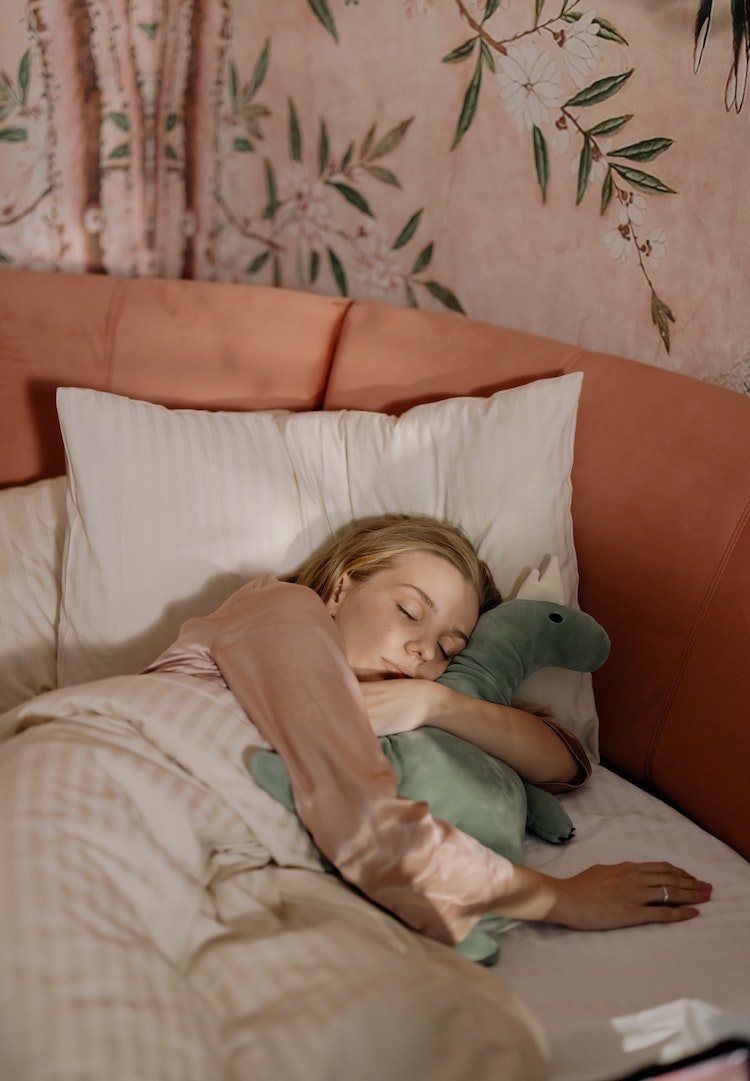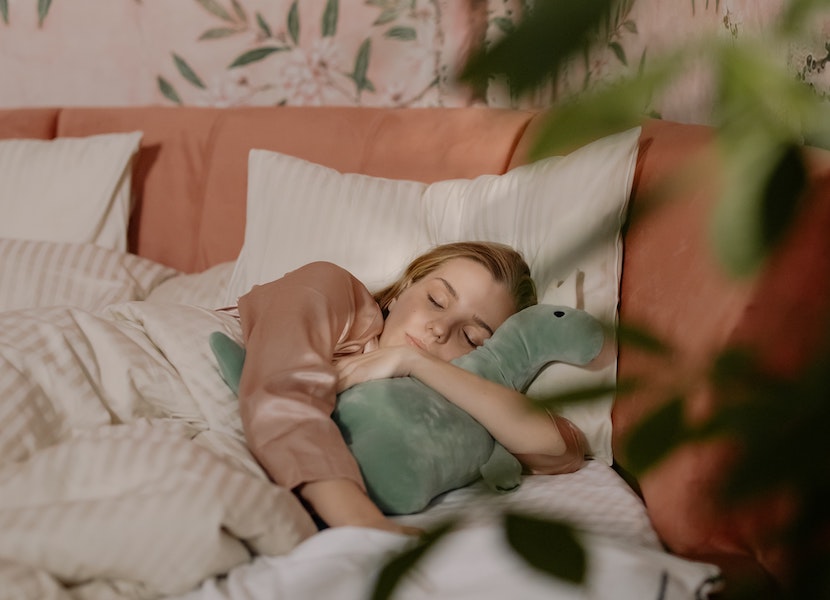Am I too old to sleep with a stuffed toy in my bed?
Words by Cara Briggs
Room for one more?
You know the age-old question, ‘If your house was on fire and you could only pick one thing to save, what would it be?’. My answer has always been my stuffed animal, Oscar. Objectively speaking, he’s nothing special, just a white, scruffy toy dog. But to me, he means the world – I jokingly refer to him as my support dog.
At 25 years old, I often wonder whether I’m too old to be sleeping with a stuffed animal, but the comfort he brings me is unparalleled. I’m not exaggerating when I say he has been on every holiday with me since I was five years old. One holiday I remember sitting in the Prague airport, Oscar in tow, when I realised I was at the wrong boarding gate.
Interested to hear how others navigate the world? Head to our Life section.
I scrambled as fast as I could, only just making my flight by minutes. As I sat on board, flustered but relieved, my heart sank. In my haste to get to my gate, I had left one of my bags behind. Did it have my passport? No. Did it have anything expensive in it? No. But it had one of my most valuable possessions: Oscar.
I burst into tears, knowing there’s no way I could ask them to hold the plane… or could I? It was the longest flight of my life, trying to come to grips with the fact I had lost something so sentimental. I hadn’t completely given up though, and as soon as landed I lodged a lost item (or should I say lost dog) report with Prague Airport.
A week later, I received a response – Oscar had been found! The eye-watering $300 to have him packed up and couriered internationally was well worth it if you ask me. I’m aware my affection for my stuffed animal may be slightly more intense than others, but I also think I’m not alone.
A survey conducted by Build-a-Bear found that 40 per cent of American adults sleep with a toy at bedtime. With so many of us sleeping with our stuffed toys well into adulthood, it begs the question, is it normal or is there an age you should stop? I spoke with the founder of Cope Psychology, counselling psychologist Shantal Lourie, to discuss the role of stuffed toys in our lives.
Shantal explains that stuffed toys enter our lives as young children to help comfort us. “When you’re young, you don’t have the tools to self-soothe. So, you rely on your parents or caregivers to help know what’s safe. But when they’re not able to provide us with comfort having a stuffed toy can be used as what we call a transitional object. Stuffed toys help transition us from dependence on a person to something else and can be a great source of comfort.”
From a young age, we learn to associate comfort and security with a stuffed animal. So, what about when we still use our toys as a source of comfort later in life? “It can be a helpful tool to self-soothe at a time when we’re trying to unwind and relax or fall asleep. If there’s something you can physically see, feel and put your attention on, this can create a signal in your brain that you’re okay,” Shantal tells me.
I can vouch for a stuffed toy’s ability to create a sense of calm and have to admit I’ve used my furry friend as a source of comfort throughout my adult life. Yet I’m still met with raised eyebrows when someone sees him perched on my bed. I ask Shantal if this speaks to my development and whether I should be worried.
“There’s no real set age at which people need to be done with sleeping with a stuffed toy. I think developmentally as we get older, we want to be able to keep adding to our toolbox of ways that we can cope when feeling distressed.”
Okay, so I can breathe a sigh of relief that Oscar hasn’t reached his use-by date. However, some boundaries need to be in place to avoid your stuffed animal becoming a problem. If you feel the need to bring your toy into a work environment or on a date (neither of which I have done) it may be time to reassess your dependence on it.
While your toy can “Help you feel relaxed, it might get in the way of us developing the tools to be able to independently self-soothe,” says Shantal.
It’s important, as with anything, to strike a balance between using your stuffed toy to self-soothe and becoming overly reliant on it. Feeling the compulsion to have your stuffed toy every time you feel anxious or distressed is when it can become problematic.
“A good analogy [for a stuffed toy] is like if we had a crutch. If we always use it to get from A to B we might not learn how to walk properly. So, I think when it comes to stuffed animals the risk is we become very dependent on it and don’t learn other ways of soothing ourselves,” Shantal explains.
At this stage, I know my relationship with my stuffed toy hasn’t become problematic and I will continue to appreciate him as a source of comfort and love. That being said, if you see me taking him on my weekly shop or to doctor’s appointments, please look the other way and know he is enjoying himself.
For more on the psychology behind stuffed toys, head here.













